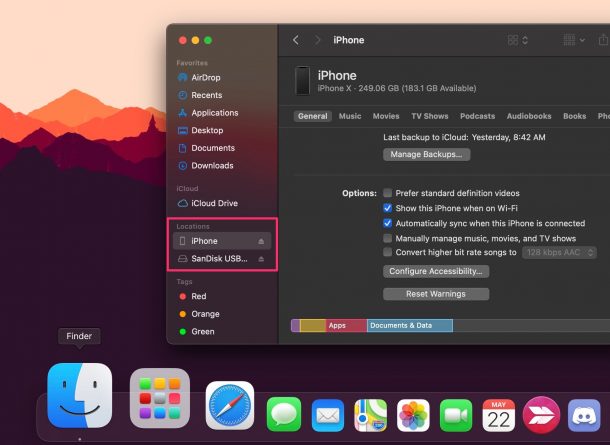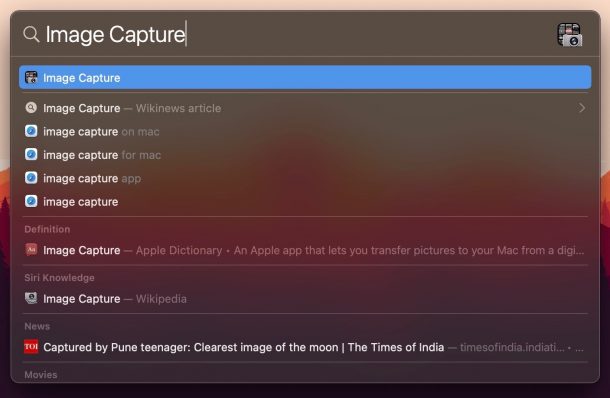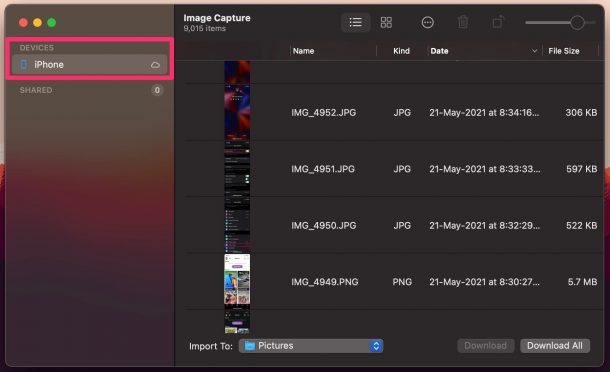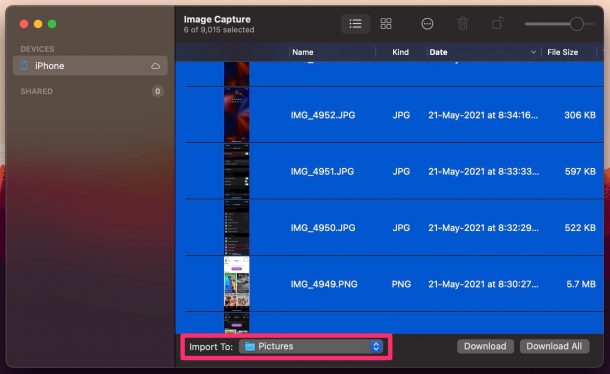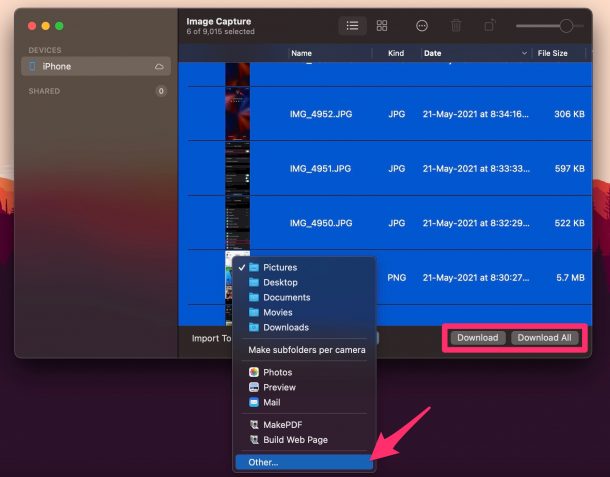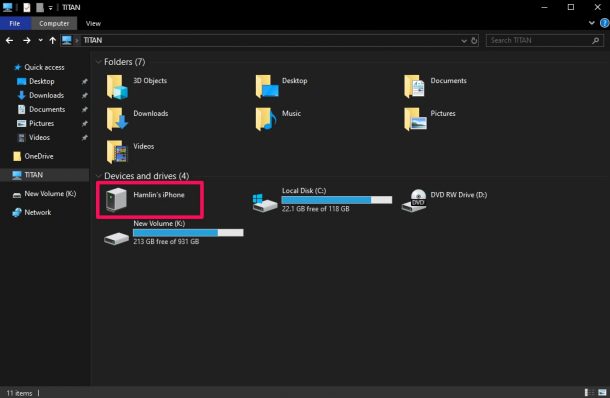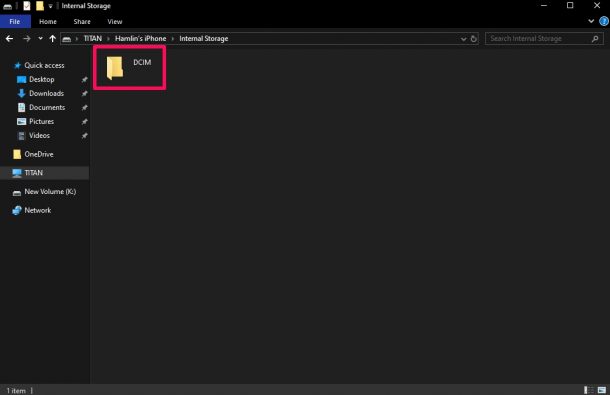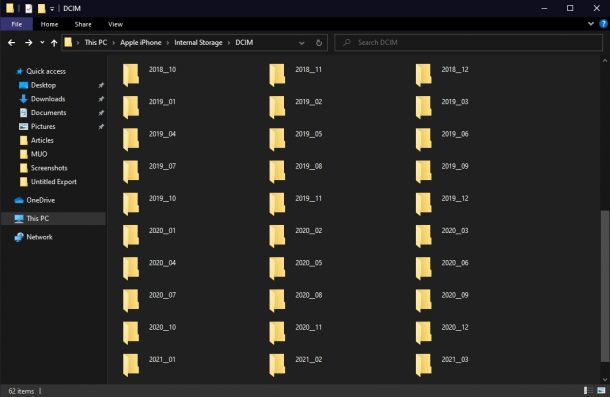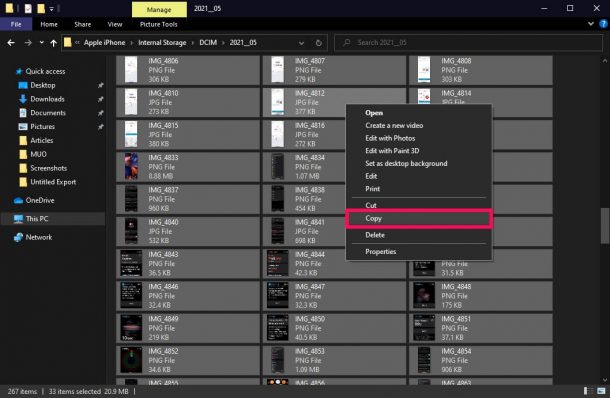How to Backup iPhone Photos to External Drive on Mac / Windows PC
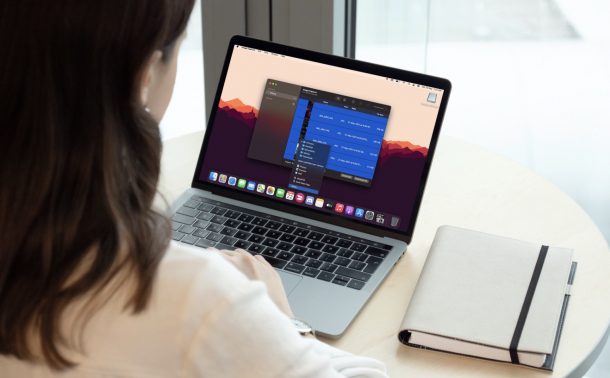
Are you looking to maintain a copy of all the photos that are stored on your iPhone without iCloud? In that case, you’ll need to locally back up the image files, and to help preserve disk space you may find it particularly useful to backup iPhone photos to an external disk or hard drive with the help of a Mac or Windows PC.
There’s no doubt that Apple’s iCloud service makes it really convenient to keep all your iPhone photos backed up, but not everyone is willing to pay for an iCloud subscription. If you’re one of them, you have no other choice but to rely on traditional local backups. Sure, it won’t be nearly as seamless, but to be fair, Apple has made the process easier in the last few years.
The procedure you need to follow for a local backup varies on macOS and Windows, but there’s nothing to worry about since we’ll be covering both platforms here. In this article, we’ll be walking you through the necessary steps on how to back up iPhone photos to an external hard drive or storage device with your Mac and Windows PCs.
How to Transfer iPhone Photos to External Hard Drive on Mac
Let’s start off with the Mac, alright? Assuming you have an external hard drive or storage device to work with and all the necessary cables to connect your devices to the computer, here’s what you need to do:
- First, connect both your external hard drive and your iPhone to your Mac using the respective USB cables. Once you’re done, open Finder on your Mac. You should find both of your devices under “Locations” on the left pane.

- Next, press “Command + Space bar” on your keyboard to bring up the Spotlight search. Type “Image Capture” and click on the top result to open the app in a new window.

- You should see the connected iPhone on the left pane as shown below. It’ll take a few seconds for the Image Capture app to finish indexing all the photos that are stored on your iPhone.

- Once all your photos show up in the app, you can select the ones that you want to back up. You can press the Command key while you click with your mouse to select multiple photos at once. Once you’re done with the selection, you can choose the “Import To” folder. By default, it’s set to the Pictures folder but click on it to use a different location.

- You can now choose your desired location from the dropdown menu. Since you want to use your external hard drive, click on “Other”. This will open a new Finder window where you’ll be able to select your external hard drive as the location for the import. When you’re ready, choose “Download” if you want to import selected photos or “Download All” if you want to import all your iPhone photos at once.

At this point, all you need to do is just wait for your Mac to finish transferring all your files. Depending on how many photos you’re trying to import, it could take anywhere from a few seconds to a couple of minutes.
How to Copy iPhone Photos to External Hard Drive on Windows PC
Next, we’ll be focusing on the procedure for Windows machines. It’s a lot different from the macOS method, but it’s actually more straightforward and easier. Let’s take a look at the steps:
- Connect both your external hard drive and iPhone to your Windows PC using the included USB cables and open File Explorer on your computer. Head over to “This PC” and you’ll find your connected iPhone here. Click on it.

- You’ll get access to the DCIM folder which contains all the image files. Open it to proceed to the next step.

- Now, you’ll see a bunch of different folders on your screen. Each of these folders contains a bunch of iPhone photos. If you notice carefully, you’ll find that the folders are named by month and year. For example, the folder named 2021_05 will have all the iPhone photos that were taken in May 2021.

- You can either select all the folders or open the desired folder and select all the photos stored in them. Right-click after selection and choose “Copy” from the context menu.

- Next, select your external hard drive from the left pane of File Explorer and right-click anywhere on the empty space. Choose “Paste” and wait a few seconds for the transfer to finish.

There you go. Now, you know exactly what you have to do whenever you want to back up all your photos.
Yes, we were focusing on the iPhone here, but you can utilize these same steps to back up all the photos that are stored on an iPad too. However, if you own an iPad Pro with a USB-C port, you won’t even need to rely on a computer since you could connect an external hard drive directly and use the Files app to back up all your photos.
If Apple ever brings the USB-C port to the iPhones, you would be able to directly move your files to an external hard drive too. Unfortunately, that’s not the case at the moment and you can blame the Lightning port for having to rely on a computer for these local backups, though you can also use an adapter if you really want to.
Considering you’re not using iCloud for backing up your photos, it’s likely that you’re not using the service to back up your iPhone data and settings too. If that’s the case, you may be interested in learning how to locally back up your iPhone or iPad to a computer too. You can use iTunes to back up your data if you’re on Windows or Finder to do the same if you’re a macOS user.
Were you able to store a copy of all your iPhone photos on an external hard drive? Did you back them up to clear space on your iPhone (or iPad), or to avoid permanently losing them in the instance of a data loss? Do you use a Mac or a Windows PC? Have you created a local backup of your iPhone data and settings on your computer too? What’s your reason for not using iCloud to back up your photos and other data? Share any of your thoughts with us!


